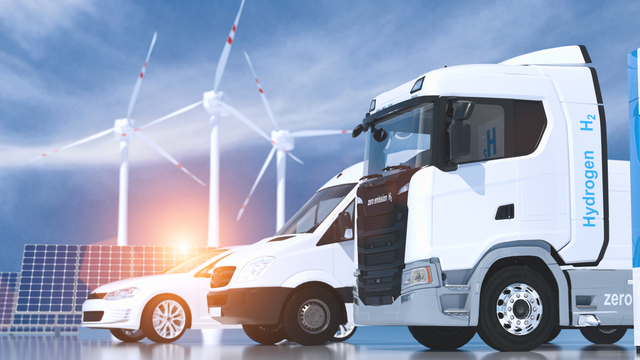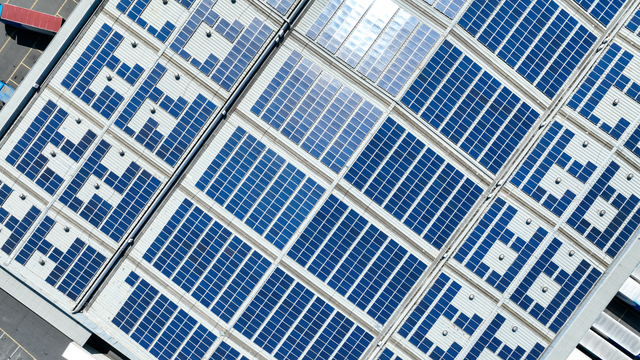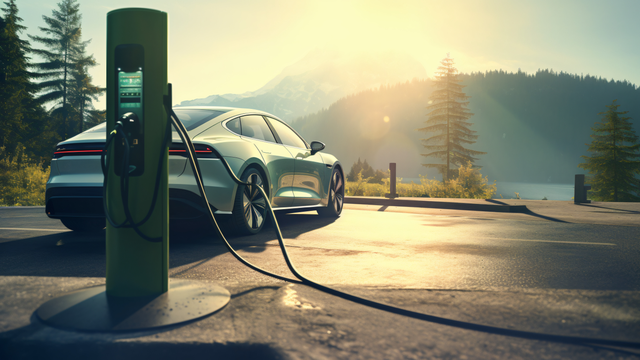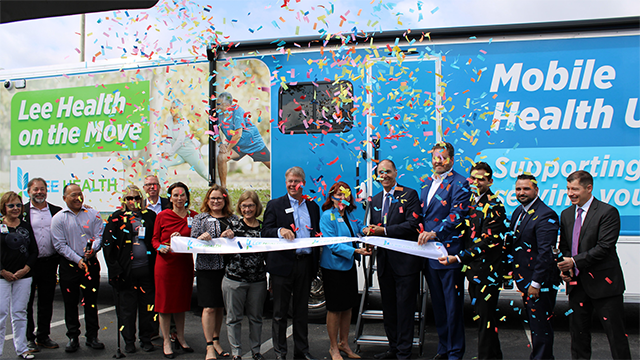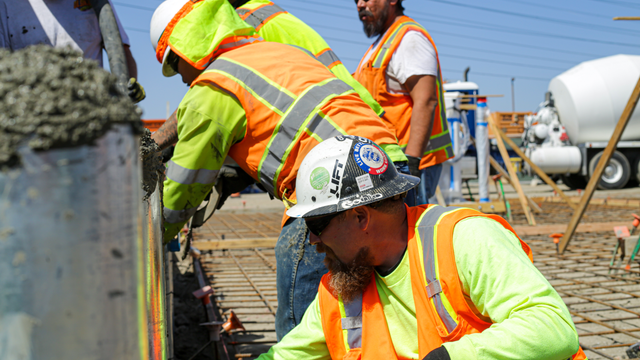By Maryline Daviaud Lewett, Director of Business Development, Transformative Technologies; and Randal Kaufman, Sales Director, Transformative Technologies
With start-up electric vehicle (EV) manufacturers and even old guard automakers announcing ambitious plans to develop zero-emissions medium- and heavy-duty vehicles, the transportation industry is on the brink of a major transformation. According to the North American Council for Freight Efficiency (NACFE), medium- and heavy-duty vehicles account for more than 20 percent of petroleum use in the U.S., even though they make up less than five percent of the overall fleet. Swapping these diesel-burning vehicles for electric or hydrogen fuel cell vehicles would be a major win for decarbonization, while helping to lower fleet operating & maintenance (O&M) costs.
This shift towards zero emissions comes as governments around the world are beginning to crack down on internal combustion engines in an attempt to quell pollution and emissions. More than nine countries and a dozen cities have announced that they will ban diesel vehicles. In the U.S., California issued a mandate that by 2040, no diesel trucks will be allowed to operate in the state. Athens, Copenhagen, Madrid, Mexico City and Paris have said they would remove diesel cars and vans from their roadways by 2025, while Norway, France and the United Kingdom have all announced phased plans to remove diesel vehicles entirely by mid-century.
There’s no doubt that these vehicles hold great potential to disrupt the transportation sector. But where does the commercial and industrial sector stand today? According to Black & Veatch’s 2019 Strategic Directions: Commercial & Industrial Report survey, which polled representatives across the commercial and industrial space, widespread adoption is still a distant dream.
Nearly half (46 percent) of the survey respondents indicated they do not have EVs in their fleet, nor do they plan to have them in the future. One in five respondents said they currently have an EV fleet, while 5 percent will lease EVs to fill their needs. Hydrogen fuel cell adoption is even lower – only 3 percent of respondents currently have a fuel cell fleet, although 11 percent said they are planning to lease one. Nearly three-quarters do not currently have one and have to plans for one.
What makes fleet managers so apprehensive? Survey data found price, lack of appropriate vehicle type, range and charging infrastructure to be the largest obstacles barring increased EV fleet adoption.

High upfront costs can be a deterrent, but they can be offset by incentives such as grants and tax breaks, which help make the total cost of ownership more competitive. According to survey data, 56 percent of respondents are benefiting from fleet rebates/incentives. By far, the most common incentive is the utility make-ready program (44 percent), followed by special time-of-use pricing (22 percent), offset cost of electricity (17 percent), offset purchase of DC commercial charging equipment (15 percent), offset purchase of an EV (12 percent) and offset purchase of L2 charging equipment (5 percent).
Because EVs have simpler operating systems, they require less maintenance than a diesel-burning fleet. Also, they weigh less, without the myriad fluids, mountings and systems required to run a combustion engine. Although still expensive to produce, costs are decreasing as battery technology improves and costs come down, making zero emissions vehicles even more attractive and – most importantly – viable.
In the U.S., $53 billion worth of goods are transported every day and freight deliveries are estimated to increase by 40 percent through 2045. For this reason, the industry cannot ignore the potential benefits of electric and hydrogen fuel cell vehicles. But with only a handful of OEMs in the space, and with many in the development and pilot phase, there are just not enough vehicles or EV options to fill demand – at least not for the next few years.
Amazon, Tesla Lead the EV Fleet Charge
Amazon is working to build out its fleet of electric delivery vehicles. To help facilitate this, the e-commerce behemoth is leading a $700 million round of funding in Rivian, a Michigan-based EV maker that plans to deliver, in 2020, an electric pickup truck and SUV that with more than 400 miles of range. Major players General Motors (GM) and Ford are also in the race to develop electric trucks. Ford is testing an all-electric F-150, while GM recently announced it was considering a fully electric version of the GMC Sierra and Chevrolet Silverado.
Under its Tesla Semi electric semi-truck program, Tesla is working on two different configurations of Class 8 long-haul truck, both of which promise a 500-mile range. Tesla Semi is slated to start production next year. A number of major companies have placed pre-orders, including Anheuser-Busch, DHL, FedEx, Meijer, Pepsi, Sysco, UPS, and Walmart.
Chances are high that medium-duty vehicles will come to market faster than their long-haul brethren. Amazon Logistics, for example, averages 40-50 miles per day on their routes, which means a medium-duty vehicle would easily serve their needs. OEMs such as Lightning Systems, Chanje Energy, and WorkHorse are all working to bring these trucks and vans to the market.
Alternative Fuels Could Complement EV Technology
Hydrogen and fuel cell technology may offer another option as companies scramble to build out their fleets. Although electric transportation is more advanced, the two technologies can complement one another. For example, fuel cells can offer a solution for cities and states where power costs are extremely high, making EVs cost-prohibitive, or in areas where building out infrastructure is unrealistic.
Canada has taken a starring role when it comes to hydrogen and fuel cell technology, exporting 90 percent of its technology, some of it through pipelines to the U.S. A new technology known as electrical hydrolysis may even reduce the need to import the gas by producing it locally using renewable energy located at the hydrogen hub. In the U.S., Southern California Gas Company is proactively investigating hydrogen, and is working to build out its pipeline network to transport hydrogen gas. It’s all still very new but expect to see hydrogen and fuel cell technology become more popular over the long-term.
Range anxiety and charging infrastructure are the other top concerns worth addressing. Distribution centers are typically built in the middle of nowhere, hundreds of miles away from metropolitan areas and established charging networks. Building charging infrastructure at these remote spots will be expensive and time-consuming, requiring new substations or distributed generation technologies to serve the needs of these big depots.
Short-haul trucking and in-city driving, where charging networks are accessible and plentiful, currently make the most sense when moving towards electrification. But considering the distances that long-haul trucks drive – according to survey results, 56 percent of fleet managers say their trucks and vans drive more than 150 miles per day – the opportunity to save money on O&M and fuel costs is too attractive to ignore. Heavy-duty trucks that drive even further (400-500 miles per day) could offer the greatest savings, but also the greatest challenge, from both the range and battery perspective.
The sheer size of these vehicles and their weight-to-motion ratio will require larger, more powerful batteries that can still be charged in a reasonable amount of time – and time is key. For work vehicles, charging time is critical to maintaining an appropriate utilization rate – meaning that the time an EV spends sitting around charging is time spent not utilizing the vehicle, which means it will take longer to become economically viable.
Although change has been slow to date, that’s not to say that enthusiasm over electric and hydrogen fuel cell vehicles is wearing thin – rather, we expect to see the pace of adoption accelerate quickly as product options begin to enter the marketplace.
About the Authors
Maryline Daviaud Lewett leads sales and partnerships in distributed infrastructure and sustainable transportation for Black & Veatch's Transformative Technologies business. The group has extensive experience in design and engineering, procurement, and construction of electric vehicle charging infrastructure networks, fuel cell vehicle filling station networks, and behind-the-meter energy storage. Daviaud Lewett has over 20 years in the CleanTech, Life Sciences, and Software industries. Her previous experience includes Management positions in the Electric Vehicles division of Schneider Electric, Akamai Technologies, and TechSoup Global. She holds a BA in Economics from Nantes University, France, and an MBA in Sustainability Management from the Presidio Graduate School, San Francisco.
Randal Kaufman is Sales Director for Black & Veatch’s Transformative Technologies business. With more than 15 years of experience in the electrical power industry, Kaufman has expertise in electric vehicle charging infrastructure and complimentary energy delivery systems, data centers, distributed generation, energy management, power quality and backup systems. He also spent two years in the stationary fuel cell power generation business, with special focus on application engineering and product development. His previous work experience includes ABB, ClearEdge Power, and Schneider Electric.
